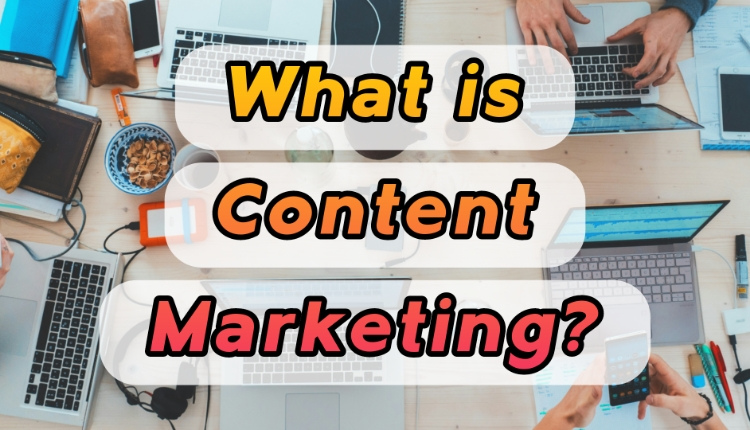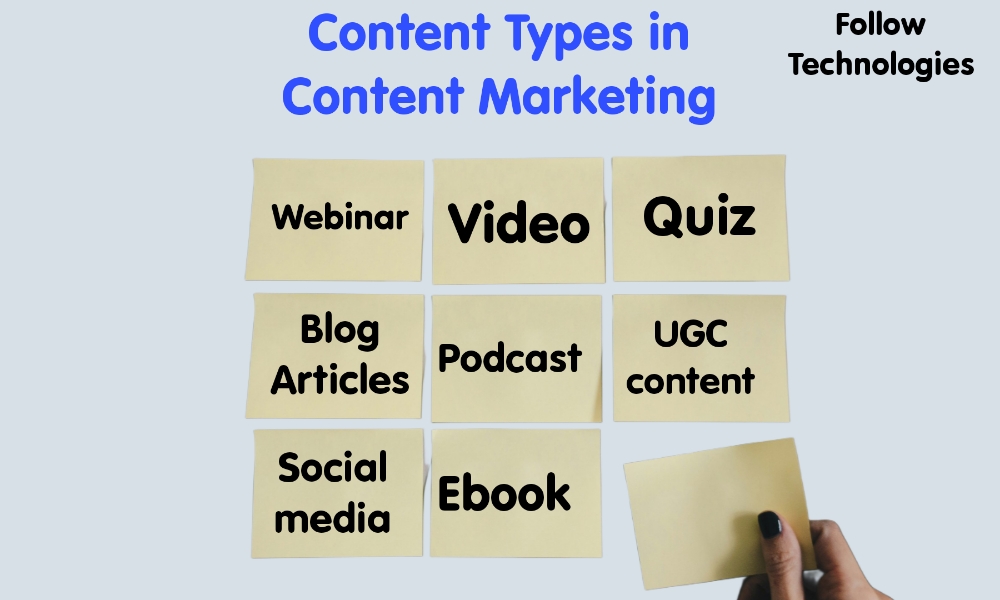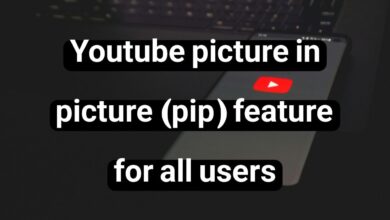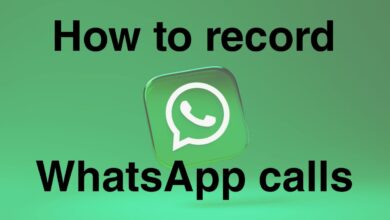What is Content Marketing? The Comprehensive Guide to 2025

“Content is king!”
“Content marketing is the most effective type of digital marketing!”
“Content strategy is essential to marketing!”
“We live in the age of content!”
You must have heard the above sentences and sentences like these many times, but maybe you haven’t thought about why. Or at all. These cliché sentences are full of exaggeration, and they make the story too big. A simple content that does not have these words. Well, get ready because your thinking about content is going to change in this article, and content marketing will become the key to success in your business!
In this article, we will examine the following:
- What is content marketing?
- What is content marketing for, and why is it so important?
- How many types of content do we have?
- How do you do content marketing?
If you agree, let’s get to the point and start today’s topic with the definition of content marketing.
What is content marketing?
Content Marketing is a combination of the two words Marketing and Content. Perhaps the simplest definition is marketing and customer acquisition through content. But let’s see how the greats in the field of marketing and content have defined content marketing:
Joe Polizzi, founder of the Content Marketing Institute:
“Content marketing is a part of a marketing and business development strategy that focuses on producing and distributing valuable, relevant, and cohesive content. The goal of content marketing is to attract new audiences and retain existing audiences, ultimately leading them to profitable actions.”
Anne Murphy, Content Marketing Manager, kapos
“Content marketing is the process of developing, publishing, and distributing useful information that engages potential customers and drives them to make a purchase.”
Seth Godin, author, entrepreneur, marketer, and speaker
“Content marketing is all that’s left of marketing.”
Brian Clark, Founder and CEO of Rainmaker Digital
“Content marketing is about creating and sharing valuable, free content to attract and convert prospects into customers and customers into repeat buyers. The type of content you share is closely related to what you sell. In other words, you’re teaching people how to get to know you, like you, and trust you enough to buy from you.”
Chris Bollman, Director of Integrated Marketing, Percolate
“Content marketing is advertising that provides value to its audience, not just a feeling.”
Lee Oden, CEO of TopRank Marketing
“Content marketing is aligning customer needs with business objectives through targeted content.”
There is one thing in all the definitions of content marketing, and that is that in content marketing, everything is about the audience, what is valuable to them, and how we can help them. We need to see what information the audience is looking for and be the first to provide them with the best content.
Now, let’s have a simple summary:
In content marketing, you produce valuable and engaging content to gain the audience’s trust, make them follow you, and, ultimately, interest them in your products and services.
It is important to understand that today, customers buy trust from you, not a product, and content can be a key factor in building that trust. So, you need good content to connect with your audience.
Examples of content marketing that have worked
Let’s read together some examples of successful content marketing that have used different examples and methods.
Crunchyroll Collections
Crunchyroll is a US-based anime distribution and streaming platform. One way Crunchyroll markets itself online is through its YouTube channel. The company posts clips and compilation videos from various episodes of popular anime that people search for the most.
This type of content marketing engages viewers, keeps his brand at the top of search results for popular anime, and encourages viewers to subscribe to his streaming service. There’s even a button on the channel banner where people can try the service for free for 14 days. His channel currently has 4.8 million subscribers, and over 120 million people use the service.

UNHCR’s “Forced Flight“ Podcast
The UN Refugee Agency’s podcast helps raise awareness among refugees by telling their unique and sometimes bizarre stories. This form of content marketing gives audiences a better understanding of the refugee crisis. It highlights the importance of the agency’s work.

Snooker and Jacuzzi Royer (a business that was collapsing)
Marcus’s pool and hot tub company had been doing well for years. Until 2008, when the U.S. economic recession hit, it was on the verge of collapse. Marcus needed to do something to get his business off the ground and keep it going, so he decided to find a cheaper and better way to market it.
Marcus began researching and, while surfing the Internet, came across a concept called content marketing. This method of marketing focused on creating content to engage users, and it was a low-cost way to acquire customers.
He started creating content in earnest; of course, his subject matter was a little different from the others. He took a simple but unique approach to his blog: answering every question that customers had asked him over the years. Their blog grew in popularity, and after a few years, not only had Marcus’s pool business survived, but it had become the largest fiberglass pool company in the world. How? It’s simple… Their site has become the most visited website in the world for pool and hot tub construction. Yes! It’s that simple, and that’s just by producing good content.
Learn the benefits of content marketing.
By producing content, you are actually increasing your customer touchpoints at every stage of the customer journey.
If someone has a question, you’re there. If they’re looking for something specific, they’ll find your articles. If they want your product features, they’ll find them on your site. And if they want a product, your brand will be their first choice. That’s if you do your job right at all stages of content marketing.
These are all part of the importance of content marketing, but the benefits of content don’t end there. Here are 5 reasons why content can be so important to your business.
1. Building trust
 These days, the volume of advertising content has increased so much that people no longer trust these messages. This is not surprising because, according to a FORBES report, the average person is exposed to 4,000 advertising messages per day! That is why building trust among audiences and converting them into customers is one of the biggest challenges for any business.
These days, the volume of advertising content has increased so much that people no longer trust these messages. This is not surprising because, according to a FORBES report, the average person is exposed to 4,000 advertising messages per day! That is why building trust among audiences and converting them into customers is one of the biggest challenges for any business.
Content can be effective in building this trust for two reasons :
- First, you are not going to advertise; you are only providing the user with the information they need to solve their problem. This complete and valuable information can be the starting point for attracting customers and gaining their trust.
- The next reason is that people in every field trust experts and seek their help to solve problems. When you produce content in your field, you are actually sharing your expertise with users.
Let’s take a look at the statistics published by Hupspot about content marketing:
78% of people prefer to know a business from the content it produces rather than from advertising.
- 70% of people believe that companies that can produce better content have a greater ability to connect with customers.
- 47% of people review at least 3 to 5 pieces of content (articles, videos, infographics, etc.) before making a purchase.
- 96% of buyers of B2B products or services seek out specialized information about the product before making a purchase.
Seeing these statistics, there is no need to say anything else, and it is easy to understand what a significant role content marketing plays in building trust among audiences.
2. Brand Awareness
 Let’s be honest; many people may not know anything about your business or your brand; you can use content marketing to increase your site traffic and inbound links and use them to introduce your brand. When you are educating users about your business, your audience is seeing you, hearing you, and becoming aware of your business. So, get to work and use it as much as possible to demonstrate your expertise by producing good and valuable content.
Let’s be honest; many people may not know anything about your business or your brand; you can use content marketing to increase your site traffic and inbound links and use them to introduce your brand. When you are educating users about your business, your audience is seeing you, hearing you, and becoming aware of your business. So, get to work and use it as much as possible to demonstrate your expertise by producing good and valuable content.
3. Better Conversion Rates
 Conversion rate means that a user who enters your site takes the action you want them to take. Whether that action is a purchase, a newsletter subscription, a product download, or whatever action you have in mind for your user. The more relevant and valuable your content is, the more users will follow you, and your conversion rate will be higher.
Conversion rate means that a user who enters your site takes the action you want them to take. Whether that action is a purchase, a newsletter subscription, a product download, or whatever action you have in mind for your user. The more relevant and valuable your content is, the more users will follow you, and your conversion rate will be higher.
Let’s look at the matter in a little more detail to clarify the issue.
Please don’t waste your content! Content marketing also has a formal way of turning a user into a loyal customer.
If you remember, the marketing funnel has three stages: awareness, research, and purchase. A user who arrives at your site through a keyword search may not have any intention of buying but is simply looking for information. From here on, your job is to create valuable content that the user needs at each stage to help them reach the final stage, which is purchase (or whatever action you want them to take).
Overall, content marketing improves conversion rates because it connects with its audience and provides it with the information it needs to make decisions.
Let’s go back to the statistics provided by major marketing institutions regarding conversion rates in content marketing:
- Content marketing conversion rates are 6x higher than other marketing methods. ( ABG Essentials )
- 61% of internet users make an online purchase after reading an article. ( Content Marketing Institute )
- According to a survey, 74% of businesses have increased their marketing leads using content marketing. ( Curata )
- Sites that use content marketing have twice the conversion rate of sites that don’t. ( hub spot )
4. Better SEO for your site (SEO)
 Content increases your chances of ranking high in search results and increases traffic to your site.
Content increases your chances of ranking high in search results and increases traffic to your site.
You create valuable, optimized content. Google rewards your efforts with high rankings in search results for keywords relevant to your business. A user searching for information about these keywords will come to your site and engage with your site because they encounter targeted, useful content.
Your content guides the user through the various stages of the marketing funnel and turns them into your customer. It doesn’t end there; the customer keeps coming back to your website because of the engaging content and may even share your content with others. As a result, your Direct, Organic, and Referral traffic increases.
5. Lower cost
 Content marketing costs are 62% lower than traditional marketing methods, and on the other hand, spending money on content marketing generates 3 times more leads than other methods, which means the possibility of increasing conversion rates and return on investment in this way.
Content marketing costs are 62% lower than traditional marketing methods, and on the other hand, spending money on content marketing generates 3 times more leads than other methods, which means the possibility of increasing conversion rates and return on investment in this way.
Content Marketing Framework
Your content must follow a predetermined framework appropriate for your business; otherwise, you will not achieve the desired results.
- Value: Your content should be useful and entertaining to your audience. The value of your content should go beyond your products and services. You should answer their questions, meet their needs, and make their lives better.
- Content Tone: What is your brand tone? Is it fun and playful or formal and classic? Adjust the tone of your content according to your brand identity and your business.
- Engagement: Your content must be engaging to keep the user on your medium and interested in your business.
- Continuity: To achieve your goal, you must be consistent in content marketing. A few pieces of content won’t do the trick; many companies fail at exactly this point.
What are the types of content in marketing?

If you were asked to name the types of content, you would quickly think of blog articles, photos, and videos because you deal with them a lot during the day, and they are very well known. However, there are more than 20 types of content that are used in content marketing, and you have a lot of freedom to choose the type of content. However, it is also important to know what content to use and where to have the greatest impact on attracting audiences. So, now it is time to move on to the content marketing matrix.
The content marketing matrix shows the different types of content that can be used in a business. The horizontal diagram shows what content is needed for the audience from the awareness stage to the purchase stage. For example, in the awareness stage, articles, ebooks, infographics, training, etc., are useful content. As the user approaches the purchase stage, the information moves towards product features, guides, prices, and reports.
However, this matrix’s vertical graph also makes an interesting point. In content marketing, pay attention to emotion alongside logic for maximum impact on the audience!
Research has shown that most customer purchases are made for emotional reasons and then justified with the logical part of the mind. Therefore, if businesses want to engage people more with their work, they must somehow engage the audience’s emotions in content marketing.
How to do it? At each stage of marketing, you start with the content that your audience loves and will have the most impact. Look at the top of the matrix: games, contests, celebrities, quizzes, etc., are all user-engaging content that can be used to make a greater impact. Then it’s time for content that will make the customer make a rational decision, and so on, until they make a purchase!
How is content marketing done?
Now that we understand content marketing, why it matters, and where it fits into our marketing plan, it’s time to implement it. Join us as we review the 9 steps to implementing content marketing.
Know your audience
You need to know who your content should reach. What content are they interested in? What are their needs? Where and how do they use your content?
To answer these questions, the best thing to do is create a customer persona. With a persona, we can understand the customer’s interests, personality traits, communication channels, hobbies, and needs and include them in our content. Understanding your audience is useful not only at this stage but throughout all stages of marketing.
Determine the content type.
In the next step, you need to choose what type of content you want to produce. To do this, you need to refer to the results of the previous step and see what characteristics your audience has and what content can help them. To find the answer, you need to consider the following points from the previous step:
- What do they want from you?
- What challenges do they have that they want to address?
- Why do they need your product or service?
- How can you help them?
- Where do they usually spend their time?
- With this in mind, consider the different types of content we reviewed earlier to decide which will best serve your audience.
Identify content channels
One side of the coin is content production, and the other side is content distribution!
Once you’ve decided on the type of content you want to use for content marketing, you need to determine how you want to get your content to your audience. Where will you share your content? Through what channels will you reach your audience?
Content channels are where content is published or through which users find content. There are several channels for marketing and publishing content:
- Website: Your website is your primary medium. In fact, most content marketing is done on your website and blog.
- Social networks: Social networks are also content marketing channels where you can publish your content, but they are your secondary channels. Why?
First, your content on these channels has an expiration date and will be deleted after a while, and no one will see your posts anymore. Second, you do not have independence on these networks, and you may lose your views due to algorithm changes or network closures.
3. YouTube: YouTube is a platform for publishing video content. Videos published on this channel can rank well in Google searches, so it is considered a good channel for publishing content.
4. Podcast publishing channels: You can publish audio content on platforms built for podcast publishing.
5. Email: You can send your published content to users via email.
Which of the following do you think is best for the customer acquisition stage and which for the brand awareness stage, among blogs, website pages, social networks, email, SMS, landing pages, etc.?
Brainstorm ideas.
We’ve come to the point where you’re asking yourself what you should be creating content about. Where can I find ideas for content? You have a few ways to find a topic:
- Create content about general business issues. First, the audience should get to know you and your company. For example, we produced both an article and a video about digital marketing and its parts so that the user knows what our work and services are about.
- Get ideas from foreign and domestic competitors.
- Many competitors have gone this route and achieved very good results, which you can use to get ideas; getting ideas is not the same as copying. See what topics they have produced content on and what topics they have produced that have received good feedback, and get ideas for yourself.
- Do keyword research. This research will tell you what users are looking for most and what topics they search for best on Google.
- Ask your sales and support team. Sales and support teams are usually directly involved with users, so they know their problems and questions and can help you choose topics.
- Remember the customer journey. To guide the user towards purchase, you need content for each stage of the journey (awareness, research, and purchase). So, keep this in mind when setting up topics.
Form a content team.
Now it’s time to build a team! Once you know what kind of content you want to create, for whom, and on what channels, then make a professional team to achieve your goals.
Depending on your needs and organizational structure, the titles of your people and the structure of your team may vary. Still, a complete content team usually includes people with the following specialties:
- Content Strategist
- Content Manager
- Writer and editor
- Copywriter
- Graphic designer
- Multimedia content producer
In small organizations, one or two people take on these responsibilities.
What equipment and tools do you need?
This section will also be determined by the type of content you have chosen. Suppose you want to write text content. In that case, you only need a simple system that has a content management system, Photoshop software, and a decent internet connection!
But you want to make a video. In that case, you need a good microphone, lights, a camera or phone, a tripod, and a system that allows you to edit your video. Of course, you can also do all the filming and editing with your phone, depending on the team’s circumstances and your own opinion on which method to choose.
Have a plan for producing and publishing your content.
Now that everything is clear, guide the team towards the tasks with a detailed plan. You should write down when the content will be produced, when it will be published, and how it will be promoted. For example, in November, you are going to have 10 blog articles, 10 Instagram posts with image and video content, and a webinar, each of which is placed on specific dates. The topics of this content have been specified in the previous steps according to the goals and users.
Create effective content
Okay! Now, everything is ready for you to create your amazing content. So, based on the set plan, start your work and create your written audio, image, or video content. Don’t forget that the purpose of creating content is to influence the audience, so use all your effort and knowledge to create quality and valuable content.
Publish your content and let people know
 Finally, it’s time for the results of your activities to reach your audience. You have two main tasks: first, publish the content at the right time and in the right way on your channel. Second, use all your power and creativity to make the content more visible.
Finally, it’s time for the results of your activities to reach your audience. You have two main tasks: first, publish the content at the right time and in the right way on your channel. Second, use all your power and creativity to make the content more visible.
For example, you may publish an article on digital marketing on your blog. You can announce the publication of your article through Telegram, Instagram, LinkedIn, Facebook, and other social networks so that interested people can see it and access it.
Measuring Content Marketing Performance
Content marketing, like any other business, requires goal setting and measurement to determine the success of your execution plan. You need to measure everything and measure your performance based on the numbers. You need to see where you are in terms of your key performance indicators, what to do next, what to strengthen, what to change, and what to maintain.
So, what indicator should we use to measure our content performance?
Content marketing success is measured by lead growth rate, website traffic, keyword ranking in search results, conversion rates, and ROI. Which metric you choose depends on your goal for the content you’re producing. For example, if you’re in the first stage of the marketing funnel and you want to get users interested in your business right now, your metric should be the number of entries; in the second stage, leads are more important, and in the last stage, conversion rates and ROI will be your measurement tools.
Overall, looking at lead generation rates is a good way to analyze content marketing performance because it is directly correlated with increased sales and revenue. But it certainly doesn’t measure up to ROI. Every business wants to make a profit. So, to really understand how effective your marketing is, you need to measure your ROI.
Inbound Marketing and Content Marketing: One Soul in Two Bodies!
Many marketers believe that content marketing is a subset of adversarial marketing. It makes sense because in adversarial marketing, instead of you looking for a customer and forcing them to see your ads, the customer looks for you based on the value you have created for them. It’s the same with content marketing. You’re supposed to create value with the content that the audience is looking for. With this content, they’ll be interested in working with your company.
What is done in content marketing is just like inbound marketing.
Inbound marketing is a method that focuses on attracting customers and drawing them into your business base. Content is also an important part of inbound marketing; that is, if we consider inbound marketing as an engine for moving a business towards strategic goals, content marketing is the fuel of this engine.
In ad-hoc marketing, we attract people and turn them into visitors, leads, customers, and, finally, promoters.
As you can see, content is responsible for moving the audience from one stage to the next. The table below shows the function and type of content used in each stage of marketing.

Marketing without content means nothing!!
No business can thrive without content. Regardless of your marketing tactics, content will be an integral part of your business process. Consider the following examples.
- Social Media Marketing: Your content marketing strategy comes before your social media strategy, meaning you need to have great content for your social media marketing.
- Search Engines: Search engines reward businesses that publish good, quality content. So, good SEO also depends on quality content.
- Click-through advertising: If the content of click-through advertising is not attractive, no one will click on it.
- Inbound Marketing: Content is the key to inbound traffic.
- Inbound marketing is also not possible without content.
The bottom line is that content is essential for every corner of marketing and for everything you want to do to promote your brand.
So that’s all about content marketing and what we should have learned from it. If you have any questions about this, ask us in the comments section.
This article was the first step in learning the important topic of content marketing.











How does content marketing differ from traditional marketing?
What are the latest trends in content marketing for 2025?
How can businesses measure the success of their content marketing efforts?
What are the key components of a successful content marketing strategy?